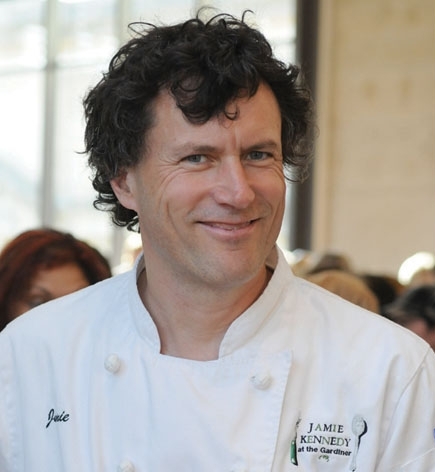by Greg Bolton

Word to the wise: olive oil is the new wine.
It’s hard to imagine now, but it was only about a quarter century ago that extra virgin olive oil – or EVOO, as it’s now casually shorthanded in cookbooks – became a mainstay on high-end North American menus.
Soon after, specialty shops began to offer a limited selection to an increasingly sophisticated breed of home cooks, and its popularity continued to explode.
Nowadays, of course, the olive oil section at your average grocery store is as bewildering in its breadth of options as the toilet paper section – and often leading to the same depressing conclusion: you have infinite options, but at the end of the day, none of them is going to blow your doors off. More times than not, price will probably make your decision for you.
That’s the bad news about the ubiquity of olive oil. The good news is that the good stuff keeps getting better and better, and as with great wine, there’s an increasingly enthusiastic and sophisticated market for it.
If you’re a New World type, you can even find oils from New Zealand, Australia and California; just as with wine, these continue to evolve from upstart status to a position of real respectability.
With all due respect to these newer producers, though, I think the very best stuff still comes from the country that is also the world’s single largest producer, Spain.
I’m not exactly alone in that assessment: Spanish oils consistently rank among Europe’s best in international competition. As well, its chief rival, Italy, was rocked by a 2008 scandal which saw 23 people arrested and 85 farms confiscated for bringing in imported olives, processing them, and selling them as 100% Italian product. This was the olive equivalent of the wine world’s “Brunellogate”, which happened the same year.
All that aside, my Spanish predilection is probably owing to the hard work of one importer and aficionado: Dolores Smith of Olivar Corp, who, about a year ago, stopped in at my shop, Pantry, and invited me to check out what would end up being two of the finest oils I’d ever tasted.
These were Dauro, produced by Bodegas Roda in Girona, about 100km northeast of Barcelona, and Parqueoliva, from Almazeras de la Subbetica, located in Cordoba, a half-day’s drive from Madrid. (Or something more like three hours if you drive like a Spaniard).
Both oils are exquisite, but at that first tasting, it was the Parqueoliva – a blend of indigenous hojiblanca, picual and picuda olives – which stayed with me longest, not least for its intense, peppery finish. The Dauro, made from arbequina, hojiblanca and koroneiki olives, was also brilliant, but less assertive.
Without exaggeration, that tasting made me rethink olive oil entirely, and forever: I suddenly realized – to the chagrin of both my wife and my accountant – that it might not be enough to have just one good EVOO on hand at home. Different wines are better suited to certain dishes, or even moods. And while olive oils don’t vary nearly as much as, say, a Chablis and a Shiraz, I started to realize that there was enough difference between the Dauro and the Parqueoliva to make me think about what to use in a given dish. As a home cook, I’m neither remarkably skilled nor especially finicky, but finding myself now spoiled for choice, I realized that Dolores Smith had made me, against all my vigilance, an EVOO nerd.
Since then, she’s added more and more products to her lineup, all of them at the higher end of the spectrum, sometimes in price, but always in quality; indeed, thanks almost entirely to Dolores Smith, Torontonians always have ready access to the very best stuff Spain is turning out.
Her very latest imports were showcased on Monday, March 22, at an event staged by Sizzling Communications at Spanish specialty store Pimenton (681 Mount Pleasant Road, Toronto). A dozen or so writers, bloggers and mixed food nuts braved some dismal weather to sardine themselves around an impromptu tasting table at the back of the shop.
The featured product, from Caceres, in Spain’s midwest, not too from the Portuguese border, was Full Moon, created by producer Pago de los Baldios de San Carlos.
A brand-new product not only to Olivar, but to the world, the first-ever harvest of Full Moon took place just before dawn on October 4th of last year – under a full moon, naturally enough – and was pressed within the hour.
As we warmed a plastic Solo Cup of the oil in our hands, Smith told us that to be classified as extra virgin, oils must be under 0.8%. Full Moon comes in at just 0.1%, which is staggeringly low.
Its expensive-looking matte-black, cube-shaped bottle – a custom design from Spanish architect Mariano Martin – added to the mystique. I found myself left with the impression that I was about to drink an Aston Martin.
Sex sells
Come tasting time, there was certainly no letdown. Made solely from arbequina olives, Full Moon is smooth and intensely buttery. Probably owing to the low acidity and very early harvest, it doesn’t have the peppery, gutsy finish of an oil like Parquoliva, but it crackles with intense flavour: apples, green grapes, green tomatoes, even wheatgrass and almond. While some might prefer a more in-your-face oil – and I might be among them – it’s almost hard to imagine a tastier, more perfectly crafted oil than this one.
While Full Moon will emerge as the company’s ultra-premium offering, producer Pago de los Baldios de San Carlos has already cemented an excellent reputation for its flagship product, Oro San Carlos. This was next up at the tasting.
Like Full Moon, Oro is pressed within an hour of harvest and boasts the same rock-bottom acidity level. Long a favourite of Michelin-starred chefs, including the notoriously finicky Ferran Adria, it’s a blend of arbequina and cornicabra olives, the latter seemingly bringing a bit more peppery zip on the finish. Smith noted that they also offer more stability and a higher smoke-point, making it a bit more versatile and forgiving than Full Moon when used in cooking. Certainly, though, it’s no slouch as a pure finishing oil. There’s less of Full Moon’s subtle green fruit here, but to compensate, there’s a bit more nuttiness to chew on.
Following the Oro, Smith pressed on with a few more oils, including this year’s Dauro (still brilliant), a nice southwestern blend called Ame (whose sexy packaging was more suggestive of Las Vegas bottle service than an olive oil) and, to finish off, Rincon, another breathtaking concoction from the producer of Parqueoliva – and one of the world’s most-awarded oils.
Because one can’t live on oil alone – even the good stuff – the night was thoughtfully rounded out with an excellent selection of tapas prepared by Pimenton’s chef-owner, Lola Czullog-Fernandez and her sous-chef, Laura Gildemeester. Oro was among the oils used in the universally excellent dishes, the standout of which was an addictive lamb meatball with membrillo, a quince paste.
Lifford generously provided a selection of Spanish wines, which helped facilitate post-tasting chit-chat and further cemented the general sense that all of us assembled, while proud Canadians and local food supporters, might have to consider the reality that we are living on the wrong continent.
We North Americans seem to have become accustomed to spending a bit of money on a good bottle of wine – in fact, we often overspend.
Do the same for some good olive oil. It will prove rewarding in its own right, lasts a whole lot longer, and what’s more, makes your posh wine taste that much better.
Various oils referenced in this article are available at fine food shops throughout the Greater Toronto area, including Pimenton, Alex Farms, Loic, McEwan, Pusateri’s, The Healthy Butcher, Thin Blue Line, and Pantry. Prices vary by oil and location. Suggested retail prices for all start at about $20; Full Moon, the most expensive of the lot, is $45.
 Greg Bolton is a proprietor of Pantry, Toronto’s Kitchen Cupboard: www.pantry.to.
Greg Bolton is a proprietor of Pantry, Toronto’s Kitchen Cupboard: www.pantry.to.







BEST TITLE EVER! EVOOlution! LOL I love it – Nice meeting you at the tasting 🙂